-
收藏模板
- 模板信息
- 更新时间:2023-09-08
- 字数:约26426字
- 页数:约24页
- 格式:.doc
- 推荐版本:Office2016及以上版本
- 售价:5 金币
您可能喜欢的文档
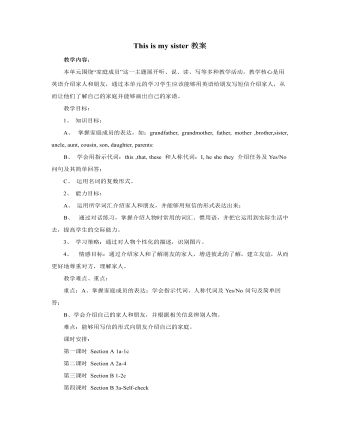
人教版新目标初中英语七年级上册This is my sister教案
(Play the recording twice again.) (Check the answer.) ③Pairwork. Draw your own picture and talk about it. T: We find out the picture of Lin Hai’s family. Can you draw a picture of your family? SS: … T: OK. When you finish drawing, tell your partner about your picture. You can use “This is …” and “ These are …” to talk about. Then report it to the class. (Students work.) (Check students’ work. Ask two or three students to report.) Step Three: Task. Talk about the family tree. T: Look at the family tree. I think it’s a big family. You can do it in groups of four or three. You can do it in pairs or only by yourself. Then report it to the class. (Students work. Teacher walks around in the classroom and helps the students.) T: Stop here. Let’s check it out. (Choose students to do it.) S1: Look at my family tree. This is my… This is my … They have two … This is my … This is my …This is my …This is my. My parents have two children. This is…This is my …My uncle and my aunt have a son. He is my … (Ask two more students to do it.) Homework. Write a passage about your family.

人教版新目标初中英语八年级上册I’m going to be a basketball player教案3篇
教学目标1.知识目标:(1)学习What are you going to be when you grow up?/How are you going to do that?句式。(2)学会用英语描述有关职业的表达法。2.能力目标:(1)能够谈论为实现理想所做出的打算和安排。(2)能够谈论未来自己与他人理想的职业及原因。(3)能用英语描述课余时间的活动安排,最终具备表达综合信息的能力。3.情感目标:新学期到来之际,让他们在学习、体育、饮食、特长、读书等方面制定计划,教育学生合理安排自己的课外生活,思考自己的理想职业及适合自己的职业。教学重点、难点本单元的重点为“be going to”表将来,want to be, what,where, when,how引导的特殊疑问句。难点是语言目标的实现。教材分析本单元以I am going to be a basketball player为话题,共设计了三部分的内容:一、Section A该部分有4个模块。第一模块围绕Do you think these jobs are interesting?这一话题展开思维(1a)、听力(1b)、口语(1c)训练;
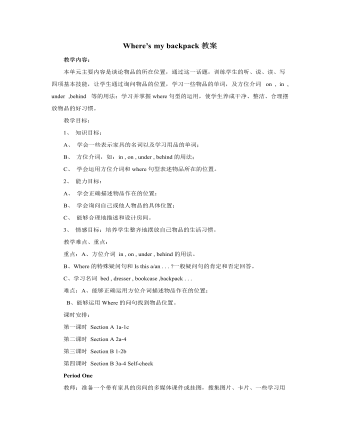
人教版新目标初中英语七年级上册Where’s my backpack教案
教师: 搜集单词卡片、背景资料。 学生:彩笔、大白纸、相关新单词。 教学设计 Step One: Learn the new words. 1.Present the new words. (Show some pictures and words on the screen to teach the students the new words.) T: What’s this? S1: It’s a room. T: Do you have a room like this? S2: Yes, I do./ No, I don’t. T: Read after me. R-O-O-M, room. Ss: R-O-O-M, room. (Teach the other words “TV, desk, picture” in the same way.) T: There are some words here. Read the words after me and spell them. (Learn the other words without pictures on the cards.) T: This is a word. Can you spell this word? (Point to a word in the card.) S1: Yes, I can. / No, I can’t. (Let them know the meaning of “can”.) T: I can spell your name. Can you spell my name? S1: Yes, I can. T: Can you write your name? S: Sorry, I can’t. I have no pen. T: You need a pen.( Give him a pen.) ( Let the students understand the word “need”.) T: I bring a football to school every day. Now it is on the floor. After class I take it to my home. (Teach “bring” and “take”. Put a football on the floor and point to the floor to teach the word “floor”.) 2.Practice the words. (Give the examples to the students and get the students to understand the new words.) Step To Listen and practice.
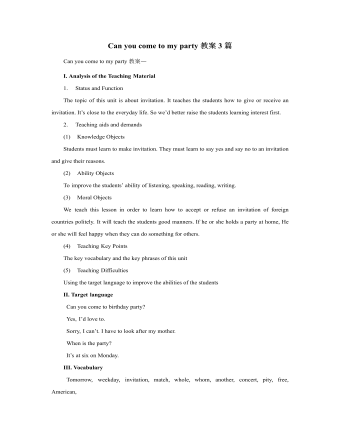
人教版新目标初中英语八年级上册Can you come to my party教案3篇
Step 3 (3b)First, tell the students when we talk about our future plans, we often use: I’m+verb+ing When we talk about what we must do, we use have to. Ask the students to fill in the blanks in 3b. The answers are: shopping, go to see, a test, I’m going, my family. Step 4 (3c)Let the students write an e-mail message to a friend. Say why you can’t visit next. Before the exercise, ask the students to give some possible answers and write them on the blackboard. So the students will feel easy to finish the writing exercise. After they finish it, Let them to correct it in groups first. Each group chooses theirs best one to read in front of the whole class. Step 5 ( planning a party )First read the conversation in the box together. Then ask the students to turn to page 88.Write down everything you have to do next week. Write in all the things you have to do . Ask the students to look at the list. Ask them “What day are you free?” This is when you can have your party. Step 6 (Self check 1 )Let the students to fill in the blanks with the words given. Change the forms of the words if possible. Then make their own sentences. The answers are: visit, playing, have to, study, comeStep 7 (Self check 2)Imagine you are Marie. Read the information and look at your schedule. Write replies to the invitation.
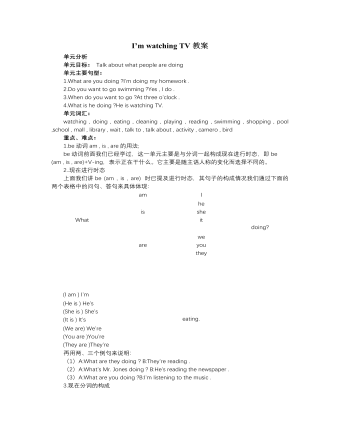
人教版新目标初中英语七年级下册I’m watching TV教案
单元分析单元目标: Talk about what people are doing 单元主要句型:1.What are you doing ?I’m doing my homework .2.Do you want to go swimming ?Yes , I do .3.When do you want to go ?At three o’clock .4.What is he doing ?He is watching TV. 单元词汇:watching , doing , eating , cleaning , playing , reading , swimming , shopping , pool ,school , mall , library , wait , talk to , talk about , activity , camero , bird 重点、难点:1.be动词am , is , are的用法;be动词前面我们已经学过,这一单元主要是与分词一起构成现在进行时态,即be (am , is , are)+V-ing,表示正在干什么。它主要是随主语人称的变化而选择不同的。2..现在进行时态上面我们讲be (am , is , are) 时已提及进行时态,其句子的构成情况我们通过下面的两个表格中的问句、答句来具体体现:3.现在分词的构成现在进行时态中be + V - ing 的构成中V-ing被称为现在分词,它的基本构成是动词原形+ing,但也有些特殊情况,下面分几类说明:(1)一般情况+ing如:read→reading,go→going,do→doing,look→looking,listen→listening,watch→watching.(2)以不发音的e结尾的词,去掉e,再加ing.如:write→writing,skate→skating,type→typing,wake→waking,make→making
- 查看更多相关Word文档
I’m more outgoing than my sister教案2篇
I’m more outgoingthan my sister教案一
Period 1
Teaching contents: Section A 1a , 1b, 1c ,2a ,2b ,2c .
Teaching goals :
1. vocabulary :outgoing , more , than , calm , wild , athletic , twin ,tall , short , thin .
2. Pattern: He hasshorter hair than Sam .
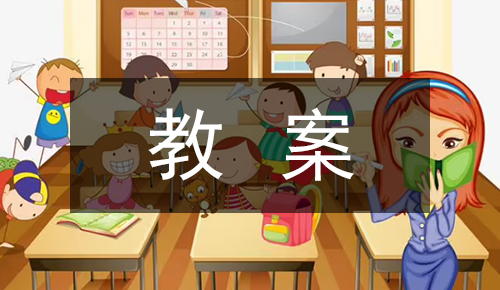
Is Tom smarterthan Tim ?
3. 能力目标:能对人物的外表进行描绘,个性进行比较.
Teachingprocedures:
Step 1 Leading in
Ask a student tointroduce herself/himself .
Step 2 Pre-task
SB Page 31 , 1a .
Show some picturesto Ss .
Say ,They arestars .Ask Ss to tell what they see .
Ask Ss to use thewords :tall ,wild , thin , long hair , short hair , heavy , calm , short and soon
Then ask Ss torepeat these sentences :Yao Ming is taller than Ronaldo .
Step 3 While-task
SB Page 31 , 1c ,1b .
Call attention tothe picture .
Point out thesample conversation in activity 1c .
Say ,Now work witha partner .Make your own conversation about the twins .
Ask several pairsto say one or more of their conversations .
Then listen to therecording .Ask Ss to number the twins .
Check the answers.
SB Page 32 ,2a .
Point out the twocolumns and read the headings :-er , -ier and more .Then point out the words inthe box .Read .
Say ,now listenand write the –er and –ier words in the first column and the words that usemore in the second column .
Play the recordingand check the answers .
SB Page 32 , 2b .
Point out thepicture and the two boxes with the headings Tina is and Tara is .
Say ,listen to therecording .Write word in the boxes .The words are from the list in activity 2a.
Play the recordingand check the answers .
Step 4 Post-task
SB Page 32 , 2c .
Point out thechart in activity 2c and on Page 89 . Say , Make your own conversationsaccording to the information. Ask pairs to continue on their own .
Correct theanswers .
Step 5 Homework
How are you andyour sister /brother different ?Write down
Period 2
Teaching contents:Grammar focus , 3a , 3b ,4 .
Teachingprocedures:
Step 1 Leading in
Ask ,How are youand your mother/father different ?
Ask some Ss to answer.
Step 2 Pre-task
Grammar focus .Review the grammar box .Ask Ss to read the sentences to the class .
Call attention tothe word “funny”,circle “y” and say when a word ends in y ,change “y” to an “i”and add –er .
Write the phrases“more athletic than” .Say,when you complete things using words with three ormore syllables ,you use the word more .
Practice : happy ,outgoing , short , thin , good .
Step 3 While-task
SB Page 33 , 3a.Call attention to the letter .Ask a student to read it to the class .Say, nowread the article ,then answer the questions .
Write if thestatements are true ,or false ,or “don’t know” if you don’t know the answer .
Check the answers.
SB Page 33 , 3b .
Say ,tell yourpartner about things that are the same and different between you and a memberof your family or a friend .You can make a conversation like the example .
Ask two Ss to readthe sample conversation in the box .
Have Ss work andask some pairs to say their dialogues .
Step 4 Post-task
Read theinstruction to the class .Ask pairs of Ss how many same and different examplesthey found .
Work in pairs andask some pairs to read their lists .
Step 5 Homework
Write down thesame and different between you and a friend .
Period 3
Teaching contents: Section B 1a , 1b , 2a , 2b , 2c .
Teachingprocedures :
Step 1 Leading in
Show a maxim to Ss: A friend indeed is a friend in need .
Ask ,What kind ofthings are important in a friend ?
Step 2 Pre-task
SB Page 34 , 1a .
Read eachdescription to the class and ask the Ss to repeat.
What kind ofthings are important in a friend .Rank the things below 1-6 (1 is mostimportant )
Ask different Ssto copy the six phrases on the Bb .Then read the phrases together .
Step 3 While-task
SB Page 34 , 1b .
Say , Now makeyour own statements about friends using
the phrases inactivity 1a .
Ask some Ss totell the class what they look for in a friend .And say ,who is your best friend?
SB Page 34 , 2a .
Play the recordingand check the answers .
SB Page 34 , 2b .
Play the recordingand check the answers .
Step 4 Post-task
SB Page 34 , 2c .
Say , Now workwith your partner .Make a conversation using information in the chart .
Ask several pairsto say their conversations to the class .
Step 5 Homework
连词成句:
1. Tom , Sam ,intellectual , more , than , is .
2. her sister , as… as . not, sports , at , good, is ,Liu Ying.
3. me , same , as, the , friend , my , is .
4. makes , laugh ,a , me , good , I , think , friend .
5. outgoing , are, both , we .
Period 4
Teachingprocedures :
Step 1 Leading in
Greeting .
Step 2 Pre-task
SB Page 35 , 3b .
Read theinstruction to the class .Ask Ss to look at the chart on Page 34 .
Ask a student toread the example to the class .
Say ,now writeyour own sentences .
Ask students whofinish first to write sentences on the Bb.
Ask some Ss toread the sentences ,each student read one sentence one by one .
Step 3 While-task
SB Page 35 , 3a .
Read theinstruction .Point out the sample answer .
Say , Now read thearticle .Explain the words and sentences in your own words .
Listen to therecording .
[教学过程]
Step 1 Lead-in
T:I have a sister.Can you guess what she looks like and what she is like? (Show them you arewaiting.)
S:She is tall./She is thin. / She has long hair./She is easygoing./…(Students use theirimagination and express themselves freely.)
T:Let’s look atour photos. (Show them on the screen.) Please talk about us.
S:She is shorterthan you. /She has shorter hair than you. /She is thinner than you. /…(Students get information from the photos.)
T:I’m more outgoingthan my sister.(Lead in the class subject.)
[ 1、平时师生间接触多,但学生与老师的家人接触甚少,利用学生的心理和想象空间,调动学生的学习兴趣,增进师生间的相互了解。2、了解学生对已学过的形容词比较级和最高级的掌握程度,为下一步巩固学习做好铺垫。]
Step 2 Revision
1、 Revise the adjectives describing people’sappearance and personalities:
Divide the classinto four groups and have a competition. See which group of the students canget as much as possible. Write down on a piece of paper prepared before class.(Students must collect them before class.)
2、Show some photos about famous persons andtalk about their personal traits, using description words, such as shorthair/long hair, curly hair/straight hair, tall/short, heavy/thin,funny/serious, outgoing/quiet, smart/foolish, beautiful/ugly, intelligent/lazy,friendly/unfriendly …etc, on the screen.
[1、复习已学内容,自然延伸到新课学习,起到承上启下的作用。2、开展竞赛活动,既可调动课堂气氛,又可提高求知欲望,一举两得。]
Step 3Presentation
1、 Learn some new words about personaltraits: calm/wild, athletic/weak, using the pictures of 3 pairs of twins inSection A.
T: Who is calmer,Tom or Sam?
S: Tom is calmer thanSam. Sam is wilder than Tam.
Tom is moreathletic than Sam. Sam is weaker than Tom.
2、 Do Section A-1a.Match each word with theopposite. Check the answers.
3、 Get students to introduce the rules ofthe comparative and superlative degrees of adjectives.(Show them on thescreen.)
[1、充分利用课本资源和网络资源,进行词汇教学,词不离句,形散而神不散。2、让学生归纳总结语法知识点,因势利导,有利于开启思维,体现以学生为中心的教学特点。]
Step 4 Listening
1、 Listen to the tape and number thepictures in 1b.
2、 Listen to the tape and complete the chatin 2a. Listen again and fill in chat in 2b.
3、 Check the answers.
[听力训练既是对知识的巩固,也为下一步的任务输出提供了输入材料。]
Step 5 Practice
Task 1: Interviewfamous persons(Pair work)
1、Demonstrate the activity with one student.(Imagine he/she is a famous person. The teacher acts as a reporter.)
eg.T: Hello,Susan. May I ask you some questions about your family?
S: Yes.
T: Do you have abrother or a sister?
S: Yes, I have twobrothers and one sister.
T: Who is taller,your sister or you?
S: I’m taller thanmy sister.
T: Who is the mostathletic of you?
S: My oldestbrother.
(Show an exampleon the screen.)
2、 Ss work in pairs. Then ask some pairs toact them out in class.
Task 2: Publicvote (Group work)
1、 Divide the class into 4 groups and thenwork in groups. Fill in the chat.
In class
Name
Who is thetallest?
Who is theshortest?
Who is theheaviest?
Who is thethinnest?
Who is the mostoutgoing?
Who is the mostathletic?
…
2、 Each group choose one student to do areport. Show the results in class.
Task 3: Super star(Individual performance)
T: Suppose you area super star in the future. What will you look like and what will you be like?
S: I’m better thannow, of course.
1、 Show an example on the screen:
I want to be asuper star. Now I’m tall. Later I’m taller. Now I’m a middle school student.Later I’m a college student.…
2、Get Ss to design their future and have afree talk.
3、Ask some Ss to share with others.
[1、设计的活动既突出互动合作,又体现个性化发展,有利于调动各个层面同学的学习积极性,最大限度地提高每位同学的参与意识。2、活动的主题难易顾及到学生的实际情况,操作具有可行性。3、教师导演,学生主演,充分发挥学生的主体作用和积极能动性。4、“名人专访”、“公众投票”、“明日之星”这些活生生的生活场面,活现在课堂中,完全改变了以往“直截了当向学生传授语言”的传统教育模式,真正体现了“以人为本”的任务型语言教学模式。]
Step 6 Reading andWriting
1、 Teach “look the same”、“look different”、“ be as good as”、“be not as good as”、“a little”,using some pictures andcomparing some Ss in class.
2、 Ss read the article. Then read thestatements (1-5) about the article. Write “T”、“F” or“DK”.
3、 Check the answers. (Ask Ss to givereasons.)
4、 Ask Ss to write another letter.
T: You are Isabelnow. Write a letter to reply Liu Li. Talk about the same and different betweenyou and one of your friends.
5、Choose two or three to share the replieswith the whole class.
[1、这一环节是基于听说训练之上,培养学生的读写能力,在课堂内强化目标语言。2、对教材进行重新整合,既有效地控制了难易梯度,又不失时机地为学生创造了互相学习的机会,充分调动了学生的创造性思维和发散性思维能力。]
Step 7Consolidation and Sum-up
1、 Give Ss a chance to sum up what havelearned in this class.(Ss can talk about it freely.) Then T makes a briefsum-up.
2、 Get the Ss to do some consolidationexercises. T goes around and gives some help to Ss.
[1、让学生来做课堂小结,抓住了学生“敢于开口说英语”的心理,突出主动学习的重要性;教师作综合陈述,犹如给学生一颗定心丸,给学生增添了信心。2、强化练习,重点训练听写能力,进一步巩固本课所学内容。]
Step 8 Homework
1、 Do Workbook Exx.1-3.
2、 Preview Section B.
[案例反思]
时代在变,世界在变,事物都在发展,教育理念的更新也是势在必行。由David Nunan倡导的任务型语言教学主张learning by doing,掀起了英语教学改革的浪潮。这给工作在第一战线的英语教师带来了希望,也使得英语课堂教学更具挑战性。如今,互联网无处不在,网上分布着无比丰富的英语教学资源,多媒体和网络技术的应用已经成为英语教学不可缺少的教学辅助手段,确实为英语课堂教学带来了生机与活力。英语教师也因此用一种新的眼光来看待英语教学。“它(互联网)拥有如此令人惊讶的无限资源,它可以使我们每一位教师变得更富有创造性,更紧跟时代,更令人满意。”
I’m more outgoing than my sister.教案二
I 教学内容、目标与要求
| 题目 | I’m more outgoing than my sister. |
| 题材内容 | 本单元以描述朋友外表和个性特征, 比较个人与朋友之间的异同为题材, 增进朋友之间的相互了解。 |
|
| 教学目标 |
语言 知识 目标 | 功能 | 表述个性特征, 对人物进行比较。 |
语法 | 形容词的比较级, both的用法。 | |
词汇 | more, than, taller, shorter, thinner, longer, heavier, calmer, wilder, quieter, funnier, smarter, more athletic, more popular, twin, both, be good at | |
语言 技能 目标 | 听 | 能听懂描述某人外表及个性特征, 人物之间外表及个性异同的句子和对话。 |
说 | 能口头描述某人的外表及个性特征, 能比较不同人物之间特征的异同。 | |
读 | 能读懂对不同人物外表和个性描述的对话和简单文章。 | |
写 | 能用S + be + adj.比较级+than+被比较对象结构描述不同人物的区别, 能用as + adj.原级+as 描述不同人物的相同处, 学会用both描述不同人物的相同处。 | |
演示与表达 | 能在同学之间进行真实的介绍自己的朋友和家庭成员的特征。 | |
学习 策略 | 自学策略 | 培养分类表述, 听取特定信息的习惯。 |
合作学习 策略 | 掌握描述个人特征的表达方式, 结识朋友, 介绍朋友, 了解朋友, 形成一个学习集体, 互相帮助。 | |
情感态度 |
| 介绍朋友时要尊重朋友, 实事求是地评价朋友和自己, 珍惜培养朋友之间真实而美好的友谊。 |
任务 |
| 能够运用所学结构和句式向别人介绍自己和朋友的异同。 |
II 教学内容分析
本单元以描述某人的个性特征为中心而展开, 从外表和性格两方面比较人物之间的相同与不同点, 由此引出taller, shorter, thinner, longer,heavier, calmer, wilder, quieter, funnier, more athletic, more popular, moreserious, more outgoing 等词汇, 以及“S + be + adj.比较级+than+被比较对象”这个重要的句子结构。Section A部分重在要求听说读三个方面比较不同双胞胎之间外表和性格的区别, 附带着在3a也提出了as….as 结构the same as结构表达两人的相同之处。与Section A部分比较, Section B部分则深入到比较自己和朋友的相同与不同之处, 并提出了“选择朋友”这个话题, 引导学生正确评价朋友, 引导学生结识真正的好朋友。
III 教学过程建议
围绕本单元“描述个性特征”这一话题,教师可以在课堂上展开系列的两人一组活动引出本单元的主要单词和句子结构“S + be + adj.比较级+than+被比较对象”。如任务一:你眼里的我?学生两人一组展开活动,分别在各自的卡片上写下一些形容词,描述对方的身体和性格特点。任务二:咱们相同吗?学生两人一组展开活动,通过比较各自的卡片,找出自己和对方相同的地方,简单地表述这些相同之处,然后进一步比较这些相同之处,说说它们在程度上的区别。也可以准备一些教师自己或学生不同时期的照片,先用所学过的形容词描述照片,然后把两类照片进行比较,从而引出本单元所要讲的形容词的比较级。
本单元的听力练习教师可以根据学生的实际情况适当的扩展增加或降低难度。
在“说”方面,教师应尽量选择学生感兴趣的话题,激发学生开口交流。如活动“猜猜他/她是谁”,可以Pairwork, 也可以Groupwork,一个学生描述班里一位同学或老师并和自己比较,其他同学猜所描述的人是谁。又如小组活动“交通工具的比较”,学生4-6人一组讨论到达某一景点可乘坐的各种交通工具,并选择最佳出行方式。
课本上阅读的练习教师也可以根据学生的实际情况适当的扩展。
课后书面作业,教师应尽量要求学生根据课堂上展开的活动进行复述,一方面检查学生课堂上是否按老师要求活动,一方面加强学生对本单元主要句型和词汇的笔头操练。
第一课时
课型:speaking writing & listening
方法:多媒体教学
目标:了解并初步运用形容词的比较级,能简单地描述人物外表和个性的差异。
核心内容:
Key vocabulary--- taller,shorter, thinner, longer, calmer, wilder, heavier, funnier, smarter, quieter, moreoutgoing, more athletic, more serious, than
Keystructure-----S + be + adj.比较级+than+被比较对象
教具:录音机多媒体
教学建议
Step1 Lead-in (导入)
目的: 本阶段的活动是为下面的听力做准备, 起导入话题和复习词汇的作用。
建议:
1教师可以从网上下载一些典型的双胞胎或名人的照片, 先用所学的形容词描述外貌和性格特征, 然后进行比较, 引出本单元的主要句子结构“S + be + adj.比较级+than+被比较对象”。注意先引出单音节形容词比较级, 再引出双音节和多音节形容词比较级。如:Look at the pictures of the twins Tomand Tim. They look the same.But there are some differences between them too.Can you find them?Yes, Tom is taller than Tim. Or Tim is shorter thanTom.
其它: X X is thinner /fatter/ heavier than X X..
XX has longer/ shorter hair thanX X .
XX is calmer/ wilder than X X.
XX is funnier than X X.
XX is smarter than X X.
XX is more serious than X X..
XX is more athletic than X X.
XX is more popular than X X.
2根据黑板上的例句, 教师引导学生归纳形容词的比较级的构成形式。
3Exercise.
1)做Section A --- 1a
2)写出下列形容词的比较级。
funnythin smallfast seriouspopularfatheavy outgoing athletic
Step2 Listening( Activity 1b & 2b)
目的: 本部分听力目的在于训练学生从听力材料中获取有关描述比较人物不同的信息, 任务完成以学生能够掌握对话的主要信息为标准。
建议: 课本上的练习比较简单, 教师可以根据实际情况适当变动一下题目形式加大难度。
1Listeningexercise for 1b. Listen and fill in the blanks.
(1)Sam has _________ than Tom. Tomhas ________ than Sam.
(2)Tara is _________ than Tina. Tinais _________ than Tara.
(3)Pedro is __________ than Paul.Paul is__________ than Pedro.
Key:(1)longer, shorter(2) shorter, wilder(3) heavier, shorter
2Listeningfor 2a/2b. (按课本上的要求做练习。)
Key:Tina is funnier, more outgoing, more athletic. Tara is more serious, quieter,smarter.
3如果时间允许的话, 教师可以让学生听录音写录音稿, 这对提高学生的听力有好处。
Step3 Pairwork ( 两人小组活动)
目的: 本部分是听力活动的继续, 目的是使学生掌握听力活动中所展示的词语句法, 更重要的是促使学生开口, 能初步掌握形容词比较级的用法。
建议: 1 看P31 的图, 两人一问一答。
Model:A:Is that Tara?
B:No,it isn’t. It’s Tina. Tina is shorter than Tara.
2StudentA 看P32-2C的表格, Student B 看P89的表格, 两人一问一答。
Model:A:Is Tom smarter than Sam?
B:No,Sam is smarter than Tom.
第二课时
课型:Speaking, listening & writing
方法:Formal and interactive practice
目标:能将上一节课所学的描述和比较人物实际运用到真实的生活情景中去。
核心内容:
Keyvocabulary----as you can see,in some ways,look the same,lookdifferent,both,however,hers, as… as…,have some things in common,a little,thesame as
Keystructures----S + be + adj.比较级+than+被比较对象as….as
教具:多媒体,学生自带一些小时侯和现在的照片
教学建议
Step1Revision (复习)
目的:本活动可以起到衔接上一节课的作用, 通过Pair work 和Group work复习上一节课所学内容, 同时也为下面的阅读起个铺垫作用。
建议:Task 1Pair work我的过去与现在 (Self-check2)
课前任务: 学生准备自己小时侯与现在的照片。
(1)教师可以向全班同学展示自己以前和现在的照片(最好是把照片扫描到电脑, 用幻灯片的方式放映。), 请同学们描述几张照片的区别。如: You are older than before. /You aretaller than before. / You have longer hair than before. / You are morebeautiful than before. / You are more serious than before.学生说出这些句子的时候, 教师适当地引入 a little, much ,等修饰形容词比较级的副词和 as…as, the same as, 等原级结构的短语。
(2)两人一组, 互相向对方展示自己带来的照片, 用所学的句子结构描述几张照片的相同和不同之处。
(3)请一些同学在全班展示自己和Partner所带来的照片, 并叙述它们之间的相同和不同之处。
Task2Group work猜猜她/他是谁?
(1)首先教师作个示范, 描述某个科任老师与自己的相同和不同之处, 请同学们猜是哪个老师。Now I’d like to describe a teacher. Youall know him. He and I are both your teachers. We are both tall, but he’s alittle taller than me. I have longer hair than him. We both like sports,although he is more athletic than me. I’m better at Ping-Pong, but he’s betterat basketball. I’m more outgoing and he’s more serious. Who is he? Do you know?
(2)4-6人一组。一个同学描述某个大家都认识的同学, 其他同学仔细听, 并猜出她/他是谁。
注:以上两个活动的笔头复述可以作为家庭作业布置下去。
Step2Reading ( Activity 3a)
目的:本活动目的是训练学生阅读有关描述双胞胎之间差异的短文获取具体信息地能力, 以学生能够了解阅读内容并能简要复述为达标标准。
建议:1 Exercise 1.Read the article. Then read the statement aboutthe article. Write “T” ( for true ), “F” ( for false ) or “DK” (for don’tknow).
Key:1DK2 T3 F4 T5 DK
Exercise2.Fill in the form.
The same | Different |
|
|
|
|
|
|
2读完后, 教师可以适当地讲解一些重要的短语。如:as you can see,in some ways, look thesame,look different,hers,however,both,enjoy doing sth.,as…as, the same as, havesome things in common,more than等。
Step3Practice ( Activity 3b)
目的:本活动主要是将前面的复习中的导入和阅读中的重要短语做进一步的巩固。
建议:1 Pair work两人小组互相询问对方和朋友的相同点和不同点, 并完成表格。
My partner and his/her friend
The same | Different |
|
|
|
|
|
|
|
|
2复述 (speaking)My friend and I ,My partner and his/her friend
3复述 (writing )My friend and I ,My partner and his/her friend(此项可作为家庭作业。)
第三课时
课型:Listening and speaking
方法:Interactive approach
目标:能进一步利用所学句型描述朋友之间的相似点和不同点, 引导学生结交合适的朋友。
核心内容:
Keywords----popular, be good at, schoolwork, make sb. laugh
Keystructures---S + be + adj.比较级+than+被比较对象, as….as
教具:录音机, 多媒体
说明:本课以学生感兴趣的电影“Harry Porter”导入并展开讨论, 教学效果很好。
教学步骤:
Step1Lead-in (导入)
建议:
1教师可以用提问的方式引入本课的话题( Section B---1a): Do you have a good friend? Who is yourfriend? Why do you choose him/her as your friend? 学生的回答会五花八门, 教师应该适时进行归纳出:
![]() has cool clothes
has cool clothes
|
likesto do the same things as me. ( has the same interests)
isgood at sports ( athletic)
isgood at schoolwork.
makesme laugh. ( funny)
2展示Harry Porter 剧照, Who is this? (Harry Porter)Who arehis friends? ( Ron and Hermoine).
Step2Compare “Harry Porter” with Ron and Hermoine.
1教师提问:Why are they friends?学生回答, 教师适时归纳:They are the same age.They are allkind-hearted.They are all brave. They have the same interests.They have thesame dream.
2Differencesbetween Harry Porter , Ron and Hermoine.
(1)观看有关Ron的片段1 学生得出结论:Ron is funnier than his friends.
(2)观看有关Ron的片段2 学生得出结论:Ron is better at chess than his friends.
(3)T:How is Ron different form his friends?学生总结: Ron is funnier and better at chessthan his friends.
(4)观看有关Hermoine的片段学生得出结论:Hermoine is smarter and better atschool work than her friends.
(5)T:How is Hermoine different from her friends?学生总结: Hermoine is smarter and better at schoolwork than her friends.
(6)观看有关Harry Porter的片段1 学生得出结论: Harry Porter is braver than hisfriends.
(7)观看有关Harry Porter的片段2 学生得出结论: Harry Porter is more popular than hisfriends.
(8)观看有关Harry Porter的片段3 学生得出结论: Harry Porter is more athletic thanhis friends.
(9)T:How is Harry Porter different from his friends?学生总结:Harry Porter is braver, more popular,more athletic than his friends.
(10) 引导学生完成下面的表格:
| The same as best friends | Different from best friends |
Harry Porter |
|
|
Step3Listening ( Activity 2a/2b)
建议:本部分听力练习中, 语速较快, 语音有点含糊, 教师根据实际多放几遍录音, 并在重要的地方做提示以降低难度。任务完成以学生能简要复述课本中表格的内容为达标要求。
Key:
| Likes about best friend | The same as friend | Different as best friend |
Holly | likes to do the same things popular, good at sports | pretty outgoing | Pete’s funnier, & wilder Holly is quieter |
Maria | good listener keeps secrets | look alike, both tall, have long curly hair | Vera is quieter & smarter Maria is more outgoing |
Step4Discussion(Group work)
目的:本部分的讨论活动是对前面片段的总结, 主要目的是激发学生用所学的句子结构发表自己的意见, 正确的评价Ron, Hermoine和Harry Porter这三个人物。
1Who would you like to make friends with? (Ron, Hermoine, or Harry Porter)Why?
2Introduce your new friend to us.(Ron, Hermoine, or Harry Porter)
(1)Why is he/she your good friend?
(2)What do you like about him/her?
(3)Do you have anything same as him/her?
(4)How are you different from each other?
第四课时
课型:Reading, speaking &writing
方法:formal and interactive practice
目标:通过阅读范文,能简要复述范文,能模仿范文口头和笔头两方面表达自己的观点。
核心内容:
Keywords--- opposite, view, interest, most of, though
Keystructures--- S + be + adj.比较级+than+被比较对象, as….as
教具:录音机
建议: Step 1 Revision (复习)
目的:本活动通过Pair work 复习Section B-2b听力内容。要求能比较流利地复述Holly和 Maria与他们朋友之间的异同。
操作: 两人一组互相谈论Holly和Maria, 然后请一些同学在班上复述, 尽量不看课本。
Step2 Reading
目的:通过阅读能模仿范文口头和笔头上描述自己对选择朋友的观点,能描述自己和朋友相似和不同之处。
建议:1 阅读并完成表格:
Name | Opinion | The same as his/her friend | Different from his /her friend |
James Green |
|
|
|
Huang Lei |
|
|
|
Mary Smith |
|
|
|
2利用表格简要复述三人的观点。
3Pair work 两人一组互相表达自己的观点以及自己与朋友之间的异同。
4Write about the things that are the same and different between you and afriend.(时间不够的话,可以作为家庭作业。)
Step3 Practice ( Activity 4—Pair work)
目的:通过阅读招聘广告,获取主要信息,然后利用本单元所学句子结构到实际交流中。
建议:1 学生阅读招聘广告,教师适时做理解方面的指导。
24人一组讨论,找出本班最合适人选,并陈述理由。
3小组推荐候选人并陈述原因,教师将各组候选人的名字写在黑板上。
4全班讨论,选出最佳人选。
IV其他任务活动
1 交通工具的比较
此活动为小组活动。学生通过讨论找出到达某一城市可乘坐的各种交通工具,并选择最佳出行方式。
Teacher:We’regoing to Shanghai. How many ways can we use to get there? Yes, there are fourways: by bus, by plane, by train, by ship. Please discuss how you are going toget there.
转载请注明出处!本文地址:
https://www.lfppt.com/worddetails_62275829.html最新课件教案文档
-

精选高中生期末评语
1、该生学习态度端正 ,能够积极配合老师 ,善于调动课堂气氛。 能够积极完成老师布置的任务。学习劲头足,听课又专注 ,做事更认 真 ,你是同学们学习的榜样。但是,成绩只代表昨天,并不能说明你 明天就一定也很优秀。所以,每个人都应该把成绩当作自己腾飞的起 点。2、 你不爱说话 ,但勤奋好学,诚实可爱;你做事踏实、认真、为 人忠厚 ,是一个品行端正、有上进心、有良好的道德修养的好学生。在学习上,积极、主动,能按时完成老师布置的作业,经过努力 ,各 科成绩都有明显进步,你有较强的思维能力和学习领悟力,学习也有 计划性,但在老师看来,你的潜力还没有完全发挥出来,学习上还要有持久的恒心和顽强的毅力。
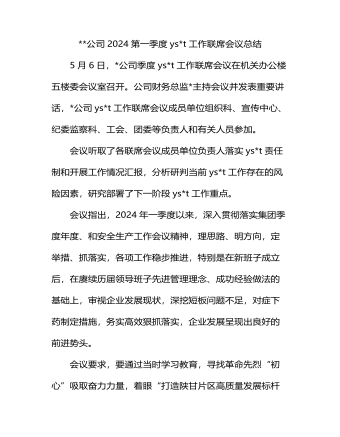
公司2024第一季度意识形态工作联席会议总结
一是要把好正确导向。严格落实主体责任,逐条逐项细化任务,层层传导压力。要抓实思想引领,把理论学习贯穿始终,全身心投入主题教育当中;把理论学习、调查研究、推动发展、检视整改等有机融合、一体推进;坚持学思用贯通、知信行统一,努力在以学铸魂、以学增智、以学正风、以学促干方面取得实实在在的成效。更加深刻领会到******主义思想的科学体系、核心要义、实践要求,进一步坚定了理想信念,锤炼了政治品格,增强了工作本领,要自觉运用的创新理论研究新情况、解决新问题,为西北矿业高质量发展作出贡献。二是要加强应急处事能力。认真组织开展好各类理论宣讲和文化活动,发挥好基层ys*t阵地作用,加强分析预警和应对处置能力,提高发现力、研判力、处置力,起到稳定和引导作用。要坚决唱响主旋律,为“打造陕甘片区高质量发展标杆矿井”、建设“七个一流”能源集团和“精优智特”新淄矿营造良好的舆论氛围。三是加强舆情的搜集及应对。加强职工群众热点问题的舆论引导,做好舆情的收集、分析和研判,把握时、度、效,重视网上和网下舆情应对。
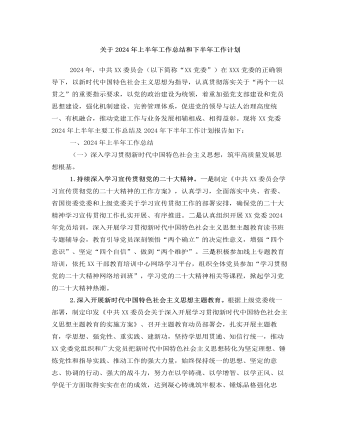
关于2024年上半年工作总结和下半年工作计划
二是深耕意识形态。加强意识形态、网络舆论阵地建设和管理,把握重大时间节点,科学分析研判意识形态领域情况,旗帜鲜明反对和抵制各种错误观点,有效防范处置风险隐患。积极响应和高效落实上级党委的决策部署,确保执行不偏向、不变通、不走样。(二)全面深化党的组织建设,锻造坚强有力的基层党组织。一是提高基层党组织建设力量。压实党建责任,从政治高度检视分析党建工作短板弱项,有针对性提出改进工作的思路和办法。持续优化党建考核评价体系。二是纵深推进基层党建,打造坚强战斗堡垒。创新实施党建工作模式,继续打造党建品牌,抓实“五强五化”党组织创建,广泛开展党员教育学习活动,以实际行动推动党建工作和经营发展目标同向、部署同步、工作同力。三是加强高素质专业化党员队伍管理。配齐配强支部党务工作者,把党务工作岗位作为培养锻炼干部的重要平台。
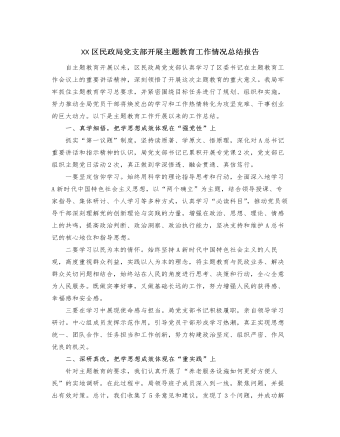
XX区民政局党支部开展主题教育工作情况总结报告
二要专注于解决问题。根据市委促进经济转型的总要求,聚焦“四个经济”和“双中心”的建设,深入了解基层科技工作、学术交流、组织建设等方面的实际情况,全面了解群众的真实需求,解决相关问题,并针对科技工作中存在的问题,采取实际措施,推动问题的实际解决。三要专注于急难愁盼问题。优化“民声热线”,推动解决一系列基层民生问题,努力将“民声热线”打造成主题教育的关键工具和展示平台。目前,“民声热线”已回应了群众的8个政策问题,并成功解决其中7个问题,真正使人民群众感受到了实质性的变化和效果。接下来,我局将继续深入学习主题教育的精神,借鉴其他单位的优秀经验和方法,以更高的要求、更严格的纪律、更实际的措施和更好的成果,不断深化主题教育的实施,展现新的风貌和活力。
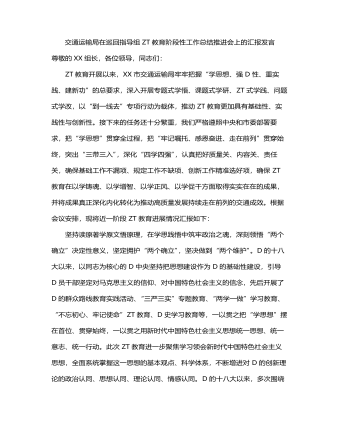
交通运输局在巡回指导组主题教育阶段性工作总结推进会上的汇报发言
今年3月,市政府出台《关于加快打造更具特色的“水运XX”的意见》,提出到2025年,“苏南运河全线达到准二级,实现2000吨级舶全天候畅行”。作为“水运XX”建设首战,谏壁闸一线闸扩容工程开工在即,但项目开工前还有许多实际问题亟需解决。结合“到一线去”专项行动,我们深入到谏壁闸一线,详细了解工程前期进展,实地察看谏壁闸周边环境和舶通航情况,不断完善施工设计方案。牢牢把握高质量发展这个首要任务,在学思践悟中开创建功之业,坚定扛起“走在前、挑大梁、多做贡献”的交通责任,奋力推动交通运输高质量发展持续走在前列。以学促干建新功,关键在推动高质量发展持续走在前列。新时代中国特色社会主义思想着重强调立足新发展阶段、贯彻新发展理念、构建新发展格局,推动高质量发展,提出了新发展阶段我国经济高质量发展要坚持的主线、重大战略目标、工作总基调和方法论等,深刻体现了这一思想的重要实践价值。
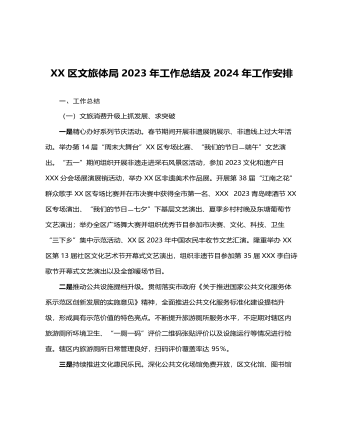
XX区文旅体局2023年工作总结 及2024年工作安排
三、2024年工作计划一是完善基层公共文化服务管理标准化模式,持续在公共文化服务精准化上探索创新,围绕群众需求,不断调整公共文化服务内容和形式,提升群众满意度。推进乡镇(街道)“114861”工程和农村文化“121616”工程,加大已开展活动的上传力度,确保年度目标任务按时保质保量完成。服务“双减”政策,持续做好校外培训机构审批工作,结合我区工作实际和文旅资源优势,进一步丰富我市义务教育阶段学生“双减”后的课外文化生活,推动“双减”政策走深走实。二是结合文旅产业融合发展示范区,全力推进全域旅游示范区创建,严格按照《国家全域旅游示范区验收标准》要求,极推动旅游产品全域布局、旅游要素全域配置、旅游设施全域优化、旅游产业全域覆盖。
今日更新Word
-

精选高中生期末评语
1、该生学习态度端正 ,能够积极配合老师 ,善于调动课堂气氛。 能够积极完成老师布置的任务。学习劲头足,听课又专注 ,做事更认 真 ,你是同学们学习的榜样。但是,成绩只代表昨天,并不能说明你 明天就一定也很优秀。所以,每个人都应该把成绩当作自己腾飞的起 点。2、 你不爱说话 ,但勤奋好学,诚实可爱;你做事踏实、认真、为 人忠厚 ,是一个品行端正、有上进心、有良好的道德修养的好学生。在学习上,积极、主动,能按时完成老师布置的作业,经过努力 ,各 科成绩都有明显进步,你有较强的思维能力和学习领悟力,学习也有 计划性,但在老师看来,你的潜力还没有完全发挥出来,学习上还要有持久的恒心和顽强的毅力。
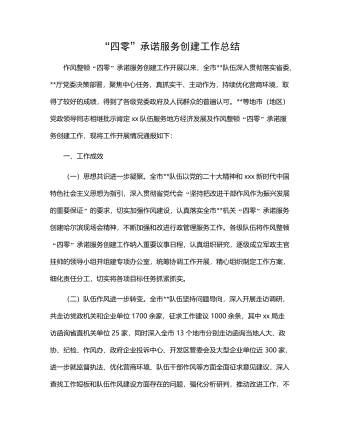
“四零”承诺服务创建工作总结
(二)坚持问题导向,持续改进工作。要继续在提高工作效率和服务质量上下功夫,积极学习借鉴其他部门及xx关于“四零”承诺服务创建工作的先进经验,同时主动查找并着力解决困扰企业和群众办事创业的难点问题。要进一步探索创新,继续优化工作流程,精简审批程序,缩短办事路径,压缩办理时限,深化政务公开,努力为企业当好“保姆”,为群众提供便利,不断适应新时代人民群众对政务服务的新需求。(三)深化内外宣传,树立良好形象。要深入挖掘并及时总结作风整顿“四零”承诺服务创建工作中形成的典型经验做法,进一步强化内部宣传与工作交流,推动全市创建工作质效整体提升。要面向社会和公众庄严承诺并积极践诺,主动接受监督,同时要依托电台、电视台、报纸及微信、微博等各类媒体大力宣传xx队伍作风整顿“四零”承诺服务创建工作成果,不断扩大社会知情面和群众知晓率。
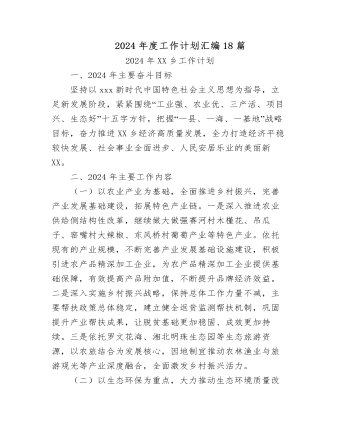
2024年度工作计划汇编(18篇)
1.市政基础设施项目5项,总建设里程2.13km,投资概算2.28亿元。其中,烔炀大道(涉铁)工程施工单位已进场,项目部基本建成,正在办理临时用地、用电及用水等相关工作;中铁佰和佰乐(巢湖)二期10KV外线工程已签订施工合同;黄麓镇健康路、纬四路新建工程均已完成清单初稿编制,亟需黄麓镇完成图审工作和健康路新建工程的前期证件办理;公安学院配套道路项目在黄麓镇完成围墙建设后即可进场施工。2.公益性建设项目6项,总建筑面积15.62万㎡,投资概算10.41亿元。其中,居巢区职业教育中心新建工程、巢湖市世纪新都小学扩建工程已完成施工、监理招标挂网,2月上旬完成全部招标工作;合肥职业技术学院大维修三期已完成招标工作,近期签订施工合同后组织进场施工;半汤疗养院净化和医用气体工程已完成招标工作;半汤疗养院智能化工程因投诉暂时中止;巢湖市中医院(中西医结合医院)新建工程正在按照既定计划推进,预计4月中下旬挂网招标。

驻村工作队2024年第一季度工作总结汇编(4篇)
三是做大做强海产品自主品牌。工作队于xx年指导成立的冬松村海产品合作社,通过与消费帮扶平台合作,在工作队各派出单位、社会团体、个人支持下,已获得逾xx万元销售额。2022年底工作队推动合作社海产品加工点扩建的工作方案已获批,待资金下拨后将正式启动扩建工作。四是积极助企纾困,带动群众增收致富。工作队利用去年建立的xx镇产业发展工作群,收集本地企业在产品销售、技术、人力、资金、运营、用地等方面的需求,并加大xx支持乡村振兴力度,xx助理赴各村委开展多场xx政策支持乡村振兴宣讲活动,本季度有x万元助农贷款获批,xx万贷款正在审批中。在壮大既有产业的同时,完善联农带农机制,一方面鼓励企业雇用本地农户就业,另一方面计划与本地农户签订长期收购合同,让农民种得放心、种得安心,带动当地群众共同致富。

主题教育总结常用提纲大全
第一,主题教育是一次思想作风的深刻洗礼,初心传统进一步得到回归。第二,主题教育是一次沉疴积弊的集中清扫,突出问题进一步得到整治。第三,主题教育是一次强化为民服务的生动实践,赤子之情进一步得到提振。第四,主题教育是一次激发创业担当的有利契机,发展层次进一步得到提升。2.第一,必须提领思想、武装思想。第二,必须聚焦问题、由表及里。第三,必须领导带头、以上率下。第四,必须务实求实、认真较真。3.一是抬高政治站位,坚持大事大抓。二是坚持思想领先,狠抓学习教育。三是突出问题导向,深入整改纠治。四是坚持领导带头,发挥表率作用。4.一是立足“早”字抓筹划。二是着眼“活”字抓学习。三是围绕“统”字抓协调。5.一是形势所需。二是任务所系。三是职责所在。四是制度所定。6.一要提升认识。二要积极作为。三要密切协作。
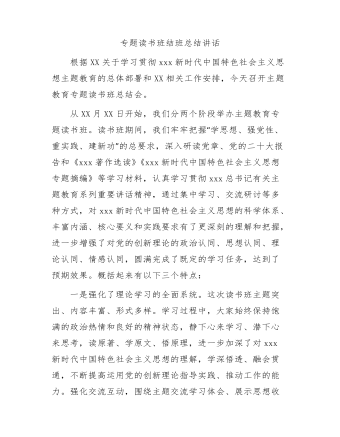
主题教育专题读书班结班总结讲话
第二,要把调查研究贯穿始终,实干担当促进发展。开展好“察实情、出实招”“破难题、促发展”“办实事、解民忧”专项行动,以强化理论学习指导发展实践,以深化调查研究推动解决发展难题。领导班子成员要每人牵头XX个课题开展调查研究,XX月底前召开调研成果交流会,集思广益研究对策措施。各部门、各单位要制定调研计划,通过座谈访谈、问卷调查、统计分析等方式开展调查研究,解决工作实际问题,帮助基层单位和客户解决实际困难。第三,要把检视问题贯穿始终,廉洁奉公树立新风。认真落实公司主题教育整改整治工作方案要求,坚持边学习、边对照、边检视、边整改,对标对表xxx新时代中国特色社会主义思想,深入查摆不足,系统梳理调查研究发现的问题、推动发展遇到的问题、群众反映强烈的问题,结合巡视巡察、审计和内外部监督检查发现的问题,形成问题清单。

















